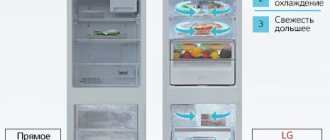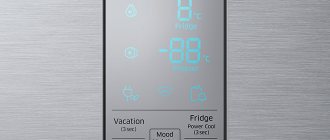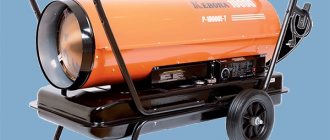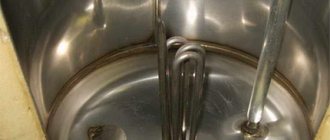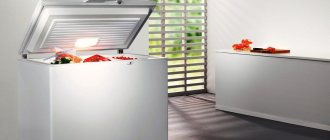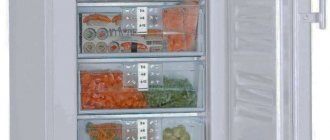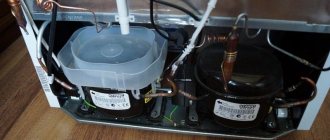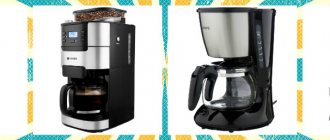Modern refrigerators have one of two automatic defrosting systems: drip and No Frost, which means “without frost.” Each of them has its own advantages and disadvantages. Let's figure it out: know frost or drip refrigerator: which is better in order to make the right choice when purchasing.
Difference between drip and No Frost refrigerator
Among people who are not very well versed in refrigeration technology, there is an opinion that the drip system is much worse than No Frost. That in such refrigerators the ice freezes at a terrible speed and that they need to be defrosted very often. Actually this is not true. Most modern refrigerators have high-quality insulation of the chambers; the doors fit tightly to the body thanks to multi-circuit seals. Therefore, almost no ice is formed inside with any of these systems.
We can briefly imagine the advantages of each of them.
| Drip | No Frost |
| Cheaper | Less hassle with care |
| More useful volume | Recovers temperature faster after defrosting |
| Consumes less energy | The cold spreads evenly throughout the chamber |
| Works quietly | Quick freezing |
| More models available | No condensation on the back wall |
Drip automatic defrosting system
Drip technology is the most traditional and widespread way to avoid the appearance of layers of ice on the walls of the refrigeration chamber. It is based on simple physical laws and involves the creation of two temperature zones in the main compartment. But don’t think that this somehow affects the functionality of the refrigerator - the difference is literally a few degrees.
On the back wall of the main (refrigerating) chamber there is a special metal plate, inside of which there are tubes with freon. As the refrigerant circulates, it cools much faster than the rest of the air. That is, in essence, it works like a radiator in reverse.
Moisture vapor from the surrounding air condenses on this metal plate - just as, for example, in winter the window of a bus fogs up if you exhale on it. They turn into droplets, which then flow down under the influence of gravity and are removed outside the refrigeration chamber before they freeze.
This principle contains both the main advantage of the drip refrigerator and the main disadvantage. The most important advantage is that the performance of such a system is relatively high. Even pots of hot soup can be placed in the refrigerator (although not recommended).
The disadvantage is that condensed moisture needs to be removed somehow. And in the air there is not only water vapor, but also volatile fats, proteins and other organic substances. Over time, the fluid drainage tube becomes clogged and becomes a place where entire colonies of bacteria and even mold develop. It needs to be washed and cleaned.
Advantages of drip refrigerators:
- Low price. Indeed, such a system will not be expensive, so you won’t have to overpay for it;
- High performance. Copes even with actively evaporating substances, such as hot soup or freshly washed lettuce leaves on the bottom shelf;
- Easy maintenance and durability. Since the refrigerant panel has no moving parts, it will last as long as the refrigerator itself—and often last for decades.
Disadvantages of drip refrigerators:
- Not protected from ice formation. Especially if any food or containers touch the metal plate. At the point of contact, the water stagnates and freezes;
- Regular cleaning of the moisture removal system is required, at least once every few months. Otherwise, it will become a source of development and spread of mold and fungi.
In general, drip refrigerators are a good budget option for everyday use. But you should still follow a few rules for operating such devices. Firstly, you should not place containers, bags or utensils in close proximity to the metal plate on the back wall. Secondly, it is necessary to regularly clean the moisture removal system. And finally, it is still better to avoid placing actively evaporating products in the chamber. Let the soup cool on the counter first.
Drip system
The drip defrosting system is the most common. It consists of the following main components:
- Engine with compressor
- A condenser in the form of a coil through which the refrigerant moves
- Capillary tube - the place where gas turns into liquid
- An evaporator located inside the housing that cools the chambers
- Temperature control relay
All these parts are hidden behind a plastic casing, so they are not visible in the camera and do not take up extra space.
Operating principle of a refrigerator with a drip system
In refrigerators with a drip cooling system, moisture collects on the back wall, from where it gradually flows into a special container. Under the influence of the evaporator, droplets are removed from the chamber.
It goes like this:
- When operating, the compressor increases the pressure of the refrigerant gas
- The gas enters the capillary tube and condenses, turning into a liquid there
- It enters the evaporator and takes heat from the chamber
- When heated, the refrigerant boils and turns into a gaseous state.
Let's see what's happening in the cell at this time. The moisture is distributed evenly there. When the compressor turns on and starts to cool the back wall, it collects on it and turns into frost. When the compressor stops, having created the required pressure, the frost begins to thaw. The water runs down through the drainage hole into a container located above the compressor. When it heats up, the moisture evaporates out.
Refrigerator no frost
The No Frost cooling system (literally “without frost”) was developed relatively recently and has gained recognition in countries with humid climates.
Its fundamental difference is the forced circulation of air inside the refrigerator chamber due to the operation of fans, thereby maintaining a uniform temperature throughout the entire volume. The air from the chambers enters the cooler, where condensation accumulates in the form of frost. When the compressor turns off, all moisture drains into a special tray.
Pros of No Frost refrigerators
- The uniform temperature inside the refrigerator compartment makes it possible not to worry about the distribution of products depending on their storage temperature.
- Quick temperature recovery after opening the door.
- Quick freezing of products in the freezer compartment, which helps preserve their beneficial properties to a greater extent; in addition, the bags in which they are stored practically do not stick together, as happens in a more humid environment.
- A small amount of condensation on the back wall of the refrigerator compartment and inside the freezer.
- Does not require defrosting.
Important! Despite the last of the listed arguments being a positive thing, we still cannot forget about hygiene and from time to time give the refrigerator a “sanitary day”
Cons of No Frost refrigerators
- The main disadvantage of the No Frost system is that the circulating air, leaving moisture on the cooler, becomes dry and tends to increase its humidity, taking it from products that are not properly packaged and drying them out. They lose their appearance, taste, etc.; you won’t store food in such a refrigerator for future use.
- A more complex design makes such refrigerators less spacious and limited in volume. You can, of course, choose a large two-door model, but this is only if the dimensions of the kitchen allow it.
- High cost compared to a conventional drip refrigerator.
- Due to the operation of fans, the energy intensity of the unit increases, and operation becomes more expensive.
- Again, because of the fans, such models are considered noisier.
Refrigerators with No Frost system
The No Frost defrosting system is more prestigious than drip defrosting. Its essence is that the moisture accelerated by the fan does not have time to turn into frost or ice in the chamber. It is brought out through a system of passages in the rear and side walls. There is an evaporator, a built-in heating element and a drainage system through which moisture passes.
The principle of operation of a refrigerator with a No Frost system
The refrigerant is compressed to a liquid state under the influence of a compressor and begins to absorb heat. Fans distribute cold air throughout the chamber and the system of passages in the walls. As a result, the temperature in the center and all corners is equalized, the products are cooled or frozen evenly. Moisture in the air leaves the wall and condenses on the evaporator coil.
After a certain time, the heating element starts. Under its influence, the ice thaws and water flows through the drainage system into a container on the compressor. It evaporates out. Therefore, the chamber walls always remain dry.
Advantages
The No Frost system has the following advantages:
- Ice and frost do not form in the chamber, so it can not be defrosted for several years. But manufacturers recommend doing this at least once a year for hygiene purposes.
- The walls of the chamber are always dry
- Bacteria do not collect inside due to normal humidity levels
- Uniform temperature is maintained in all corners of the chamber
Flaws
No Frost also has disadvantages:
- The system has more units, so the likelihood of breakdown increases
- Repairs are more expensive than for a drip system
- Products can only be stored in closed containers. When open, they quickly ventilate due to the regular inclusion of the fan.
- Fans make additional noise. This is especially true for budget models
- Noise level 36-47 dB
Recommendations when choosing a device
Before purchasing, you should pay attention to the following factors:
- Availability of containers with lids for a dry cooling system. As a last resort, you can buy a set of glass boxes with a plastic lid;
- The noise level of the device during operation. You can ask the seller to turn on the unit right in the store. If after 10-15 minutes of continuous operation the noise is still audible in a room with a lot of people, what will happen at home?
- Energy saving class. A very important parameter in the context of constantly rising energy prices. It is recommended to choose devices of class A, A+, A++ . In this case, overpaying for a more expensive unit with the same number of options will be justified;
- Only a famous brand. In the event of a breakdown, finding a similar replacement part will not be easy when purchasing a refrigerator from a nameless budget brand. It is worth asking about the warranty period and first studying the instructions by calling the nearest service center before payment.
Watch a video about the know frost and drip system
No Frost: myths and reality
A couple of decades ago, refrigerators with a No Frost defrosting system were much more progressive. Then the drip system could not ensure tightness inside the chambers due to the fact that the doors did not close tightly. Things look a little different now.
Unpleasant odors and rapid drying of food
Unpleasant odors do not form in a freezer equipped with a No Frost system, unless emergency defrosting occurs. In the refrigerator they can occur for the same reason or during storage of spoiled food. But the chances of this happening are less than with drip, because air exchange occurs faster and the temperature is equalized.
This type of refrigerator does not have a drain hole, so it cannot become clogged and cause unpleasant odors. Products in the refrigerator with No Frost quickly air out if stored uncovered. If you hide them in a container, there won't be much difference.
No Frost does not require defrosting at all
According to user stories, some of them do not defrost their refrigerator for 5-6 years. But it's not right. For the system to work properly, you need to remove food from it at least once a year, wash and wipe all surfaces.
Dry refrigerator is hazardous to health
From time to time, there are conversations on the Internet that the No Frost refrigerator is dangerous to health. This refers to the use of harmful substances as a refrigerant. Previously, outdated appliances used chlorofluorocarbon, which everyone knows as freon. After it was recognized as dangerous for the ozone layer, the cooling systems of refrigerators began to be filled with the inert gas tetrafluorocarbon R134a. Now many modern models use R600a.
The refrigerator, like any electrical appliance, including mobile phones, emits electromagnetic waves. But in modern devices they are tens of times less than in representatives of the last century. Just in case, it is better to install such a refrigerator at a distance of 1.5 m from the living area, and drip ones - 0.5 m. Since the refrigerator is rarely placed in the bedroom, it does not pose a significant danger.
There are no No Frosts with large chambers
Chambers with No Frost lose a lot of space due to additional equipment and air passages separated by a panel. In a chamber with a volume of 350 liters, only 300 liters will be useful. To get a large freezer, you need to buy a Side-by-Side refrigerator. The volume of chambers in the middle price class is 170-190 liters. Manufacturers Samsung, LIEBHERR, LG produce refrigerators with freezers from 260 to 290 liters.
No Frost system refrigerators are very noisy
It is believed that refrigerators with a No Frost defrosting system make more noise than appliances with a drip system. This occurs due to the fact that they use one or more fans that disperse air throughout the chamber.
Reviews
Anastasia
I have a refrigerator with No Frost at home. If food is kept closed, it does not dry out and the smells do not mix. I store greens in the freshness zone - onions, lettuce, parsley. They don’t wither for a long time, as if they just came from the garden. In this department the temperature is slightly lower than in others. And air circulation is minimal.
Galina
At first it was terribly annoying that you had to wrap all your food in know frost, but then you got used to it. The only thing is there is not enough space. The back wall takes away 10 cm, no less. We have an old model refrigerator, maybe this problem has already been solved. But for us it is not deep.
Alyona
We bought a refrigerator with No Frost three years ago. I was also afraid that the products would dry out quickly. Yes – cutting sausage, cheese, etc. without packaging it dries quickly, but otherwise I don’t see any difference from drip. Only advantages: no need to defrost, wash as needed. But there are no pieces of ice in the freezer, which for me is worse than drying out food.
Tips for choosing
Having compared the two automatic defrosting systems, we see that they both have their advantages and some disadvantages. Therefore, each buyer chooses a refrigerator for himself, taking into account his needs and other parameters: cost, size, minimum temperature in the freezer.
For many, a good option would be a device with a drip system installed in the refrigerator compartment and a No Frost system in the freezer. It will be cheaper than Full No Frost, but this will not affect functionality.
For those who couldn't decide
Technologies do not stand still and relatively recently (about 15 years ago) Bosch developed and implemented the Low Frost system. It is radically different from No Frost in the structure of the coolers. In it, the freezing elements are located behind all the walls of the refrigerator. Frost from the evaporator circuits forms in a minimal amount. The absence of a fan unit makes such refrigerators silent, economical and with large internal space.
The latest Low Frost system
There is also another solution - a combined cooling system. Units with this design are an order of magnitude more expensive than mono-system ones, but will satisfy the most demanding buyer. The peculiarity of the solution is that the No Frost cooling system is used in the freezer compartments, and the drip cooling system is used in the refrigeration cabinet.
